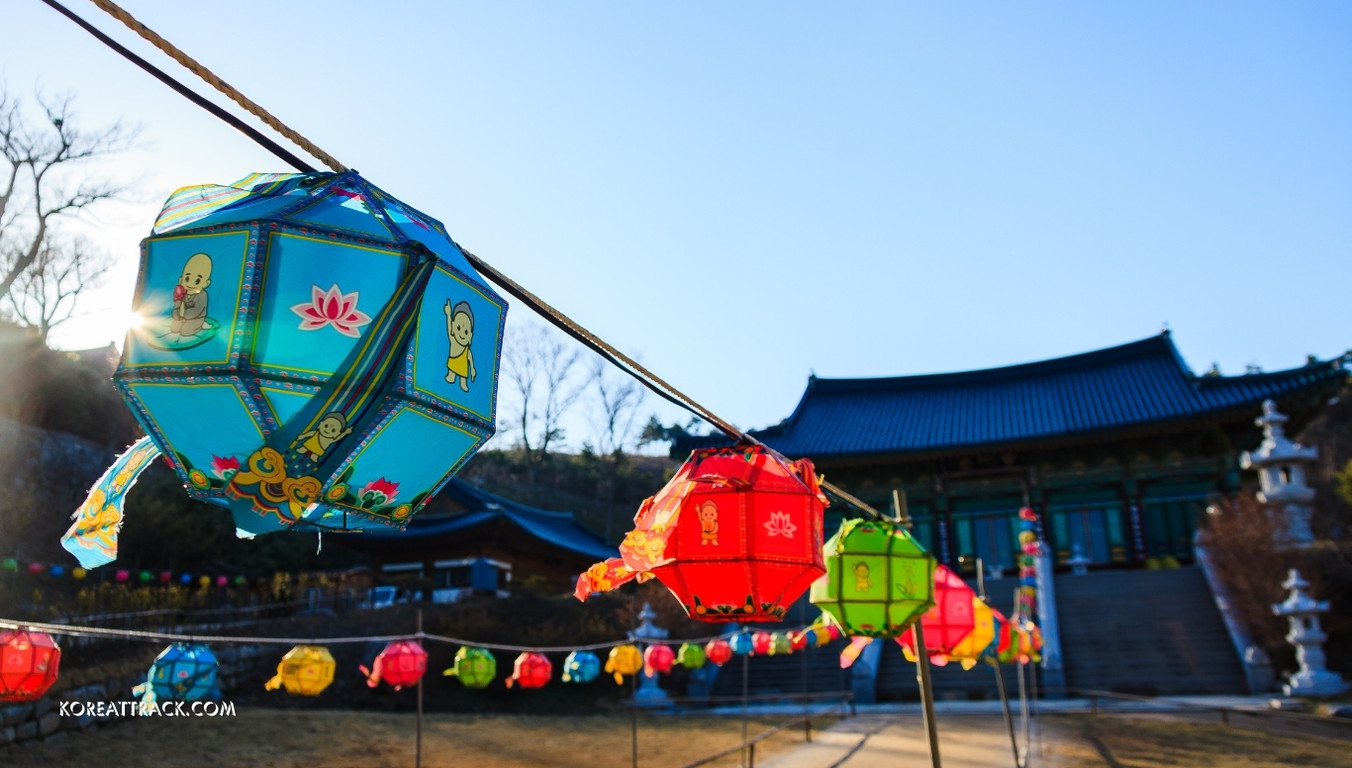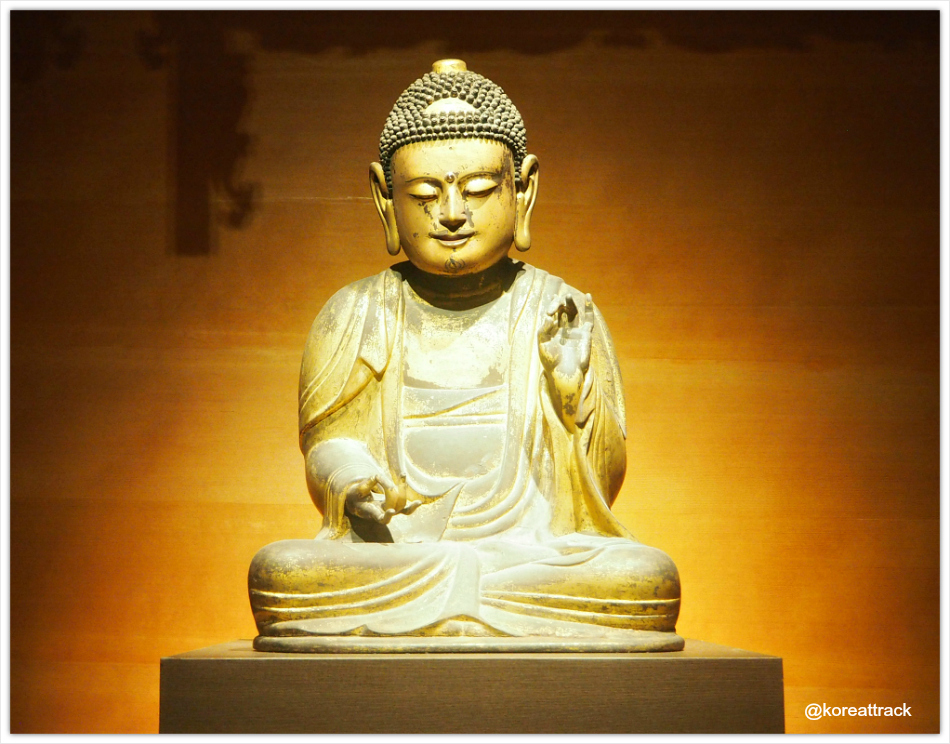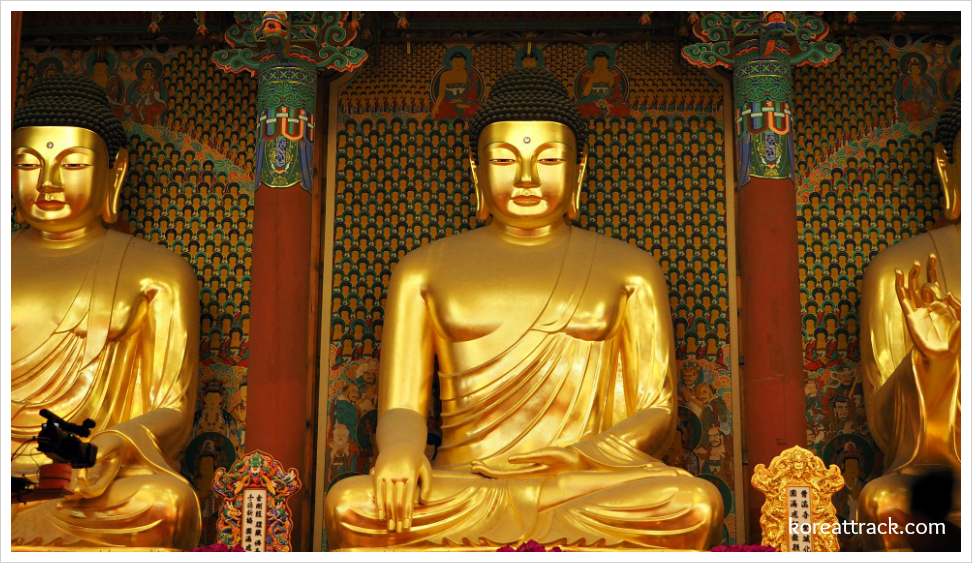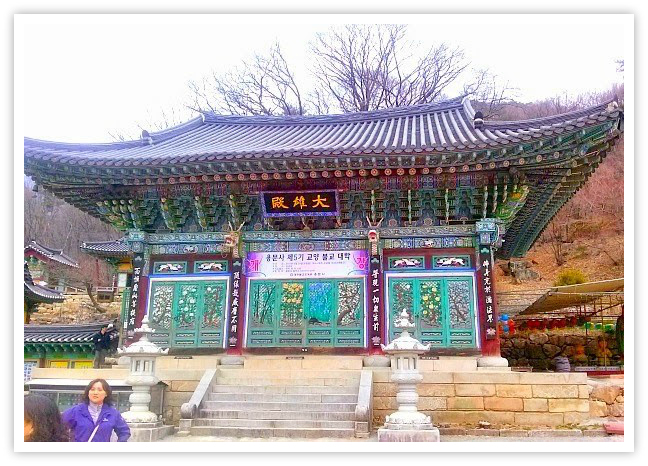Pagyesa Temple
in Daegu City
 Buddha's Birthday lanterns - Daegu City
Buddha's Birthday lanterns - Daegu CityPagyesa Temple in Daegu
Have you ever heard of the Pagyesa Temple in Daegu? It is a hidden gem tucked away in the lush greenery of the Mt. Palgongsan region.
The temple is steeped in history and has been around for over 1,200 years. It was built during the Silla period and has since undergone several renovations to preserve its architectural grandeur.
The temple is known for its picturesque location, surrounded by towering pine trees and rocky cliffs.
Once you enter the temple, you will be greeted by a serene atmosphere that will transport you to a world of peace and tranquility.
Let me take a closer look at the fascinating history and unique features of the Pagyesa Temple. Come along, and let's explore this hidden gem together!
Origins Of Pagyesa Temple
Throughout its long history, Pagyesa Temple has been an important center of Buddhism in Korea. It was said that the temple was home to over 1,000 monks during the Goryeo Dynasty.
However, the temple was severely damaged during the Japanese invasions of Korea in the late 16th century, and it was not until the Joseon Dynasty that the temple was restored to its former glory.
The temple was again damaged during the Japanese colonial period, and parts were destroyed. However, after Korea's liberation from Japan in 1945, the temple was rebuilt once more.
Today, Pagyesa Temple is considered one of the most beautiful and well-preserved temples in Korea, and it is a popular destination for tourists and pilgrims alike.
The temple features several beautiful buildings, including the Main Hall, the Seven Buddhas Pavilion, and the Four Heavenly Kings Hall.
It also houses an extensive collection of cultural artifacts, including Buddhist statues, paintings, and calligraphy.
In addition to its historical and cultural significance, Pagyesa Temple is also known for its beautiful natural surroundings.
The temple is located on the slopes of Mount Naewon, and visitors can enjoy stunning views of the surrounding mountains and valleys.
In other words, Pagyesa Temple is a truly remarkable place that embodies Korea's rich history and culture. Its long and eventful history is a testament to Buddhism's enduring spirit and the Korean people's resilience.
Geomantic Influence
The temple's name, "Pagye," refers to Pungsu-jiri, a Korean form of geomancy.
It signifies stopping the Earth's energy from flowing away through the streams that run down the valley on either side of the temple.
According to ancient Korean beliefs, the location of a temple played a vital role in its success.
Pagyesa Temple's location was chosen based on its geomantic significance, which is believed to bring good fortune and prosperity to the temple and its followers.
Architecture & Cultural Significance
Pagyesa Temple has a unique architectural style blends traditional Korean and Chinese styles. The temple was built using wood, and its design showcases the refined artistry and craftsmanship of ancient Korean builders.
Some of the notable features of the temple include the main hall, bell tower, and pagoda.
Pagyesa Temple is a place of worship and an essential cultural landmark in South Korea. It has been designated a national treasure, and many cultural events and festivals are held annually.
The temple attracts visitors from all over the world who come to experience its rich history, architecture, and natural surroundings.
Location and Setting
Pagyesa Temple is on Mt. Palgongsan, a famous mountain in southeastern South Korea.
The mountain's impressive elevation of 1,192.3 meters makes it a popular hiking destination for locals and tourists.
Pagyesa Temple is located northwest of Donghwasa Temple, another significant temple on the mountain.
The two temples share the mountain's spiritual energy, creating an atmosphere of peace and tranquility that visitors can feel.
Historical Resilience: Destruction & Restoration
Sadly, Pagyesa Temple was destroyed during the Imjin War, a devastating conflict in Korea between 1592 and 1598.
Despite the destruction, the temple rose from the ashes and became stronger.
In 1605, the monk Gyegwan took on the task of rebuilding the temple. He worked tirelessly to restore the temple's structures and artifacts, culminating in constructing the Wontong-jeon Hall in 1606.
Later, in 1695, the monk Hyeoneung led another rebuilding effort to enhance the temple's beauty and spiritual significance.
Pagyesa Temple has a deep connection to the Joseon Dynasty, the ruling dynasty of Korea from 1392 to 1897. In particular, King Sukjong, who reigned from 1674 to 1720, had a special connection to the temple.
He prayed for blessings for his unborn son, who later became King Yeongjo. In gratitude for his prayers being answered, King Sukjong built the Giyeong-gak Hall in honor of his son and his predecessors.
Hall of Significance: Wontong-jeon
The Wontong-jeon Hall is one of the most significant structures at Pagyesa Temple. It was initially built in 1606 and has withstood the test of time, remaining a symbol of the temple's resilience and spiritual significance.
The second more significant hall is Giyeong-gak Hall. The Giyeong-gak is a place of prayer and gratitude dedicated to the kings of the Joseon Dynasty and their lineage.
It is a beautiful and peaceful space where visitors can reflect on and connect with the temple's rich history and spiritual energy.
In short, Pagyesa Temple is a remarkable and historically significant temple that holds a special place in the hearts of Koreans and Buddhists worldwide.
Its history, architecture, and cultural significance make it a must-visit destination for anyone interested in exploring South Korea's rich cultural heritage.
Pagyesa Temple invites you to explore its sacred grounds, soak in the mountain's tranquility, and discover the echoes of centuries past. 🏯🌿🙏
For more information, you can visit https://www.pagyesa.org.
Getting to Pagyesa Temple in Daegu
If you want to reach Pagyesa Temple in Daegu City from Seoul, there are several ways to travel.
You can take a high-speed KTX train, a slower local train, an intercity bus, or a plane. However, the best option is to take the KTX train from Seoul Station to Seodaegu Station, which takes approximately 1 hour and 49 minutes.
Once you arrive in Daegu, you'll need to ride the Daegu subway system and get off at the Ayanggyo stop, which is stop #137 on the first line. After exiting from exit #2, you can head to the nearby bus stop.
You can catch Bus #101, #101-1, or Express Bus #1 to reach Pagyesa Temple at the bus stop.
Please note that travel times may vary depending on the time of day and traffic conditions. It's always a good idea to check the latest schedules and routes.
Enjoy your visit to Pagyesa Temple! 🏯
- Home
- Temples in South Korea
- Pagyesa Temple In Daegu
Get Exciting Activities
Book one of our exciting activities today to experience the thrill of a lifetime! Take advantage of this opportunity and secure your spot in advance.
Hotel Map Guide
Find your affordable, accessible, and comfortable hotel in Seoul at Agoda.Com. See the hotel map below...
Hotel Booking Guide
Find affordable and amazing hotels on Agoda.com using the search box below. Book now to enjoy great discounts and save!







New! Comments
What do you think about this page? Leave me a comment in the box below.